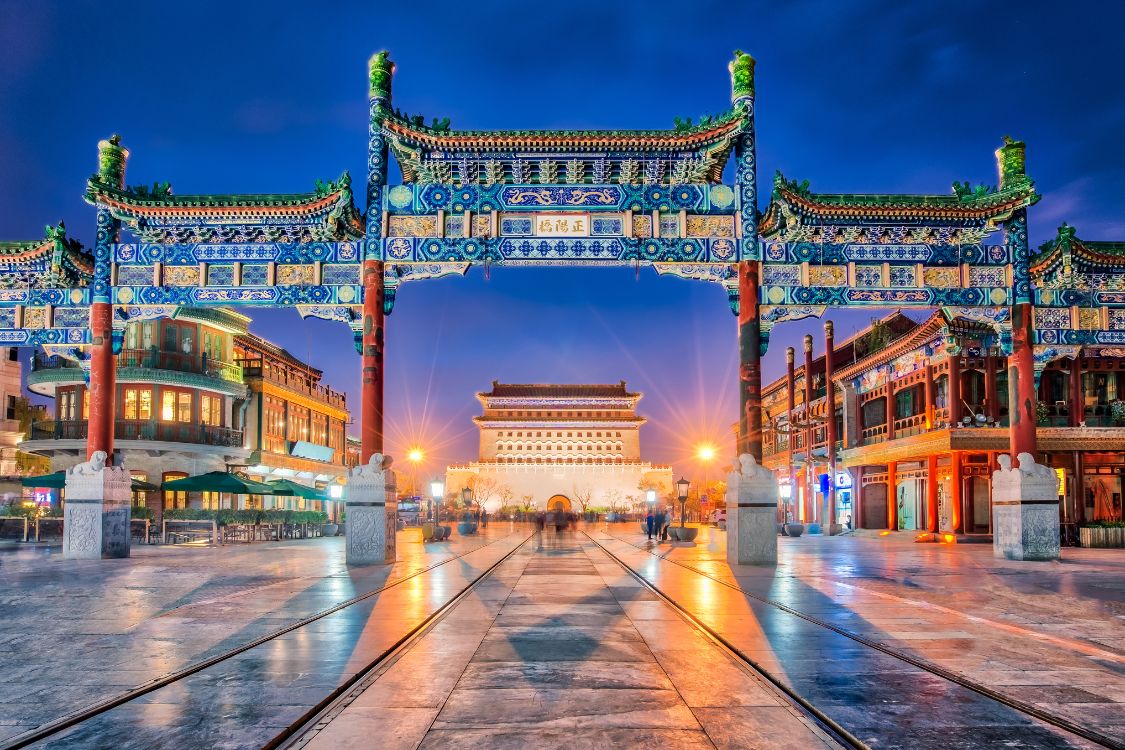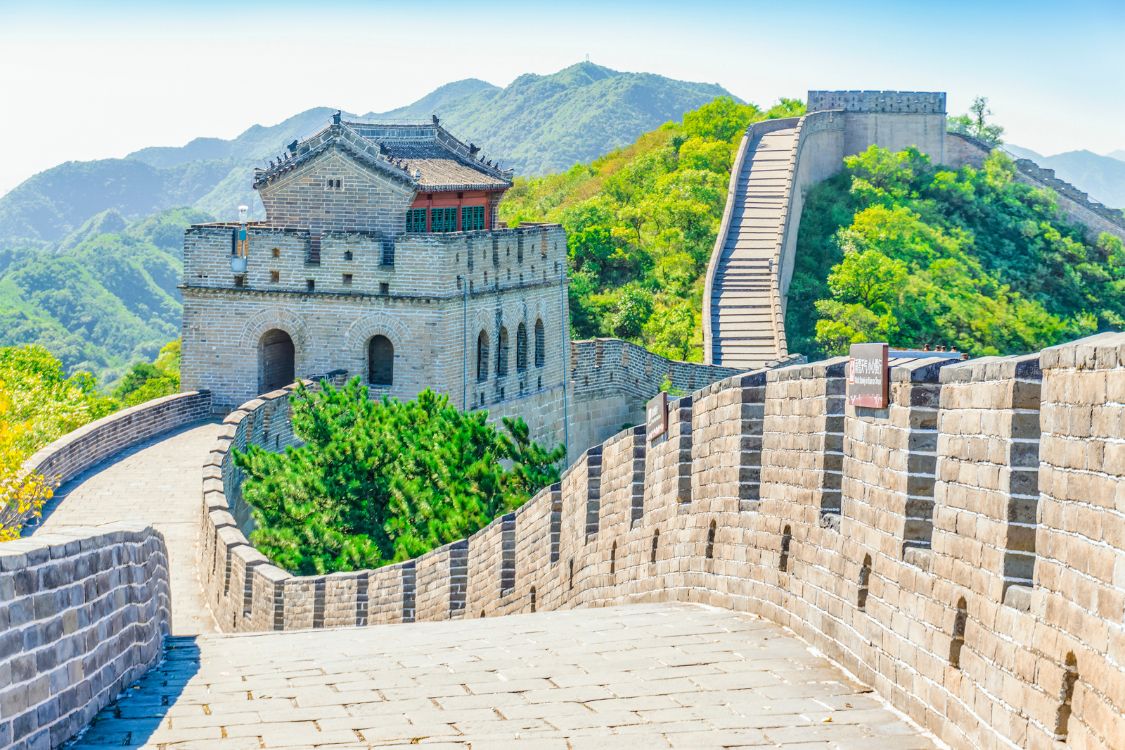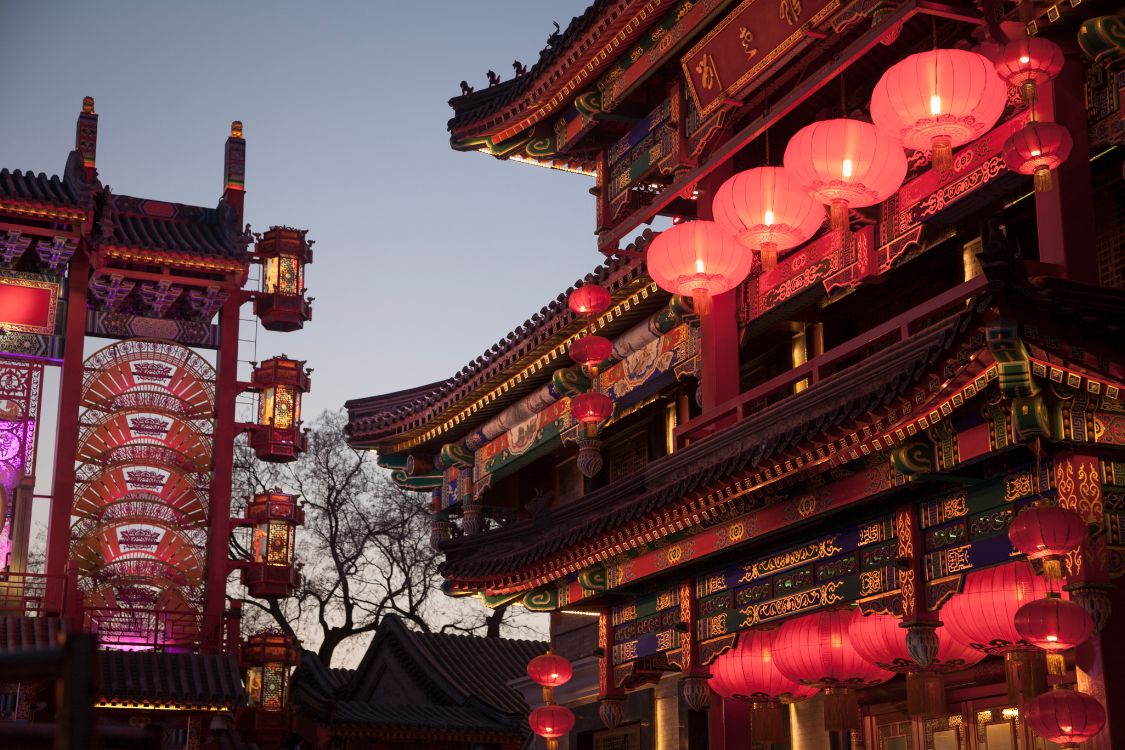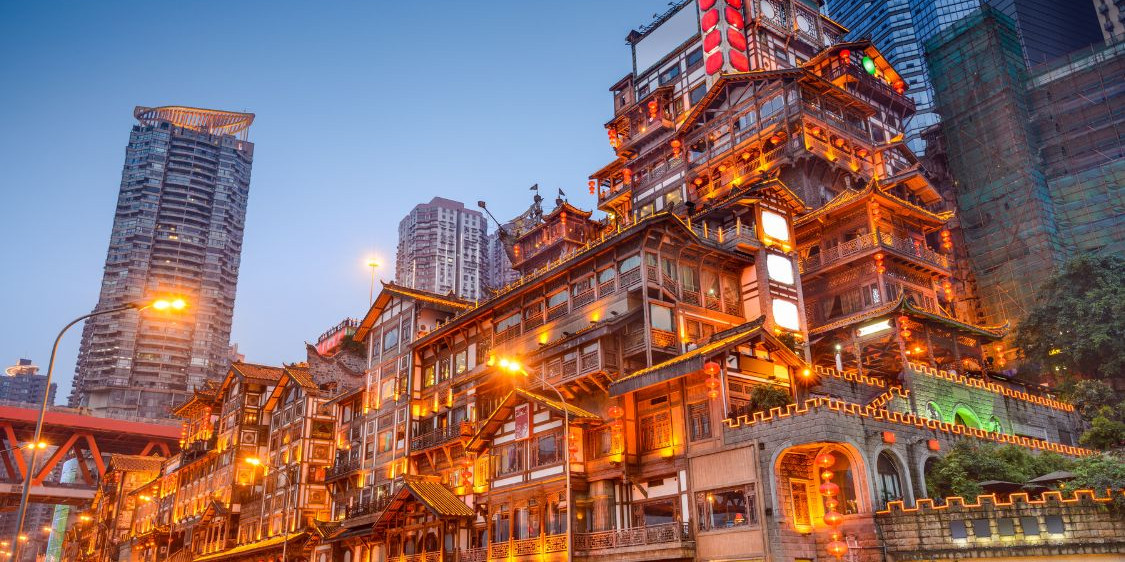When is the best time to travel to China? This question often leaves potential travelers puzzled due to the country’s vast landscape and diverse climates. From the northern steppes to the southern coastlines, China’s weather varies significantly, making it crucial to time your visit well. Generally, spring and autumn are heralded as the ideal seasons, offering mild temperatures and vibrant scenery. These periods not only promise pleasant weather but also showcase the country’s natural beauty. Additionally, traveling during off-peak seasons can lead to budget-friendly experiences with fewer crowds.
Table of Contents
ToggleOverview of the Best Time to Travel to China

China’s vast geographical expanse results in a diverse climate, with regional variations that significantly impact travel experiences. Northern China, including cities like Beijing and Harbin, experiences long, cold winters and hot, dry summers. In contrast, Southern China, home to cities such as Guangzhou and Hong Kong, has a subtropical climate characterized by hot, humid summers and short, mild winters. These differences necessitate careful planning when choosing the best time to visit specific areas.
Spring (March to May) and autumn (September to November) are widely regarded as the best seasons for traveling to China. During spring, temperatures are mild, ranging from 10°C to 25°C (50°F to 77°F), and the landscape bursts into life with blooming flowers, including the iconic cherry blossoms. Autumn offers cool, dry weather, making it ideal for outdoor activities and sightseeing. Both seasons provide more comfortable travel conditions and showcase China’s natural beauty, from the lush landscapes of Guilin to the vibrant hues of the Great Wall.
Travelers seeking a more budget-friendly experience may consider visiting China during the off-peak seasons, such as winter (December to February). While northern regions can be quite cold, with temperatures often dropping below freezing, this period provides opportunities for unique experiences like the Harbin Ice Festival. Off-peak travel tends to attract fewer crowds and offers lower prices for flights and accommodations, allowing for a more relaxed and economical journey.
Spring Travel in China: March to May
Spring in China, spanning March to May, offers some of the most favorable conditions for travelers. During these months, temperatures are typically mild, ranging from 10°C to 25°C (50°F to 77°F). This makes it an ideal time for outdoor activities and sightseeing, as the weather is neither too hot nor too cold. One of the highlights of spring is the cherry blossom season, especially in regions like Wuhan and Yuyuantan Park in Beijing, where the scenery becomes a breathtaking display of pink and white blooms. This period presents a delightful opportunity to witness nature’s beauty at its finest.
Popular destinations such as Xi’an and Chengdu are particularly appealing in spring. Xi’an, known for its historical significance and the famous Terracotta Army, enjoys comfortable weather conditions, making exploration pleasant. Chengdu, the gateway to the Giant Panda Breeding Research Base, boasts a vibrant atmosphere and mild climate, perfect for visitors looking to enjoy both culture and nature. These cities, along with many others, provide a rich tapestry of experiences without the oppressive heat of summer or the chill of winter.
Travelers visiting China in spring can partake in a variety of festivals and events that highlight the country’s cultural richness. Here are five key festivals and events to consider:
- Qingming Festival
- Luoyang Peony Festival
- Shanghai International Music Festival
- Water Splashing Festival
- Chinese Labor Day Celebrations
Packing for spring travel in China requires thoughtful consideration. Given the variability in temperatures, it’s advisable to pack layers to adapt to both warm afternoons and cooler evenings. Lightweight jackets and comfortable walking shoes are practical choices. Xpat Journeys can offer tailored travel plans, ensuring visitors make the most of their springtime adventure in China by providing insights into local attractions and events.
Summer Travel: Navigating China’s Hottest Months

Traveling to China in the summer presents notable challenges due to the high temperatures and humidity levels, especially in cities like Chongqing, Nanjing, and Wuhan. During June to August, temperatures can soar well above 30°C (86°F), making outdoor activities less comfortable for those unaccustomed to such heat. The intense humidity further exacerbates the situation, creating a muggy atmosphere that can be draining for travelers. Understanding these conditions is crucial for planning a summer trip effectively.
Despite the oppressive climate, summer in China is vibrant with a diverse array of festivals and events. The Dragon Boat Festival in June and the Lantern Festival in July showcase traditional culture and offer a unique glimpse into local customs. These events provide travelers with an opportunity to experience the rich cultural tapestry of China, even as they contend with the summer heat. Participating in these festivals can be a rewarding experience, adding depth to any travel itinerary.
To mitigate the challenges of peak tourist season and high temperatures, travelers might consider exploring cooler destinations like Tibet and Yunnan. These regions offer more temperate climates, with Yunnan known for its stunning landscapes and ethnic diversity, while Tibet provides breathtaking high-altitude vistas. Visiting these areas not only helps avoid the sweltering heat but also the throngs of tourists that flock to more popular cities. Planning a summer itinerary that includes these cooler locations can enhance the travel experience, providing relief from both the heat and the crowds.
| Month | Average Temperature | Key Events |
|---|---|---|
| June | 28°C (82°F) | Dragon Boat Festival |
| July | 30°C (86°F) | Lantern Festival |
| August | 31°C (88°F) | Qixi Festival |
Autumn Adventures: September to November
Autumn in China, spanning September to November, is celebrated for its mild weather and stunning natural beauty, making it an exceptional time for sightseeing. During these months, temperatures in many regions are comfortably cool, with warm afternoons and crisp evenings. The landscapes transform into a picturesque tapestry of red, gold, and orange as the leaves change, creating a perfect backdrop for exploration. This season provides an ideal climate for visiting renowned attractions like the Forbidden City in Beijing, where the pleasant weather enhances the overall experience.
Among the most popular destinations during autumn are Beijing and the Yangtze River. Beijing, with its rich history and cultural sites, becomes even more enchanting against the backdrop of autumn hues. Meanwhile, a cruise along the Yangtze River offers breathtaking views of the changing foliage and the dramatic cliffs of the Three Gorges. These locations provide a unique blend of cultural experiences and natural beauty, drawing travelers eager to immerse themselves in China’s diverse offerings.
Travelers should be aware of the Mid-Autumn Festival and National Day Holiday, as these events can significantly affect travel plans. The Mid-Autumn Festival, celebrated in September, is marked by mooncakes and lanterns, offering a glimpse into traditional Chinese culture. However, during the National Day Holiday at the beginning of October, domestic travel surges, leading to crowded attractions and higher accommodation prices. Planning around these dates can help avoid potential disruptions and enhance the overall travel experience.
Packing Tips for Autumn Travel
Packing for an autumn trip to China requires thoughtful preparation. Light layers are recommended to accommodate the fluctuating temperatures throughout the day. A comfortable pair of walking shoes is essential for exploring both urban and rural areas. For those planning their itinerary, consulting Xpat Journeys can provide valuable insights into local customs and attractions, ensuring a well-rounded and enjoyable visit during this vibrant season.
Winter Travel Considerations: December to February
Traveling to China from December to February offers a unique experience shaped by the country’s cold climate, which brings its own set of attractions. The frigid temperatures, especially in northern regions, create ideal conditions for winter sports and festivals. Skiing enthusiasts will find excellent opportunities in places like Yabuli Ski Resort, while cultural explorers can enjoy events like the Harbin Ice Festival, renowned for its stunning ice sculptures and illuminated displays. This period, with its thinner crowds, provides a more serene backdrop for those willing to brave the cold.
Key winter destinations, such as Harbin and Beijing, offer distinct seasonal activities that draw visitors from around the globe. Harbin, often referred to as the “Ice City,” hosts the spectacular Harbin Ice and Snow Festival, offering intricate ice carvings and thrilling snow activities. Meanwhile, Beijing presents a different winter charm with its historic sites, including the Forbidden City and the Great Wall, often blanketed in snow, providing a picturesque setting that enhances their timeless beauty.
When planning winter travel in China, managing the cold weather effectively is crucial. Packing appropriately ensures comfort and enjoyment during the trip. Essential winter packing items include:
- Insulated and waterproof outerwear
- Thermal layers
- Sturdy, warm boots
- Gloves, hats, and scarves
For those seeking tailored travel plans and insights, consulting Xpat Journeys can provide valuable guidance and help travelers make the most of their winter adventure in China.
Regional Climate Variations and Their Impact on Travel

China’s extensive territory results in diverse climate patterns, significantly influencing travel plans. North China, encompassing cities like Beijing and Harbin, is characterized by long, harsh winters with temperatures often plunging below freezing and hot, dry summers. This contrasts sharply with South China, which includes areas such as Guangzhou and Hong Kong, where the climate is subtropical. Here, travelers will find shorter, mild winters and hot, humid summers, leading to a more consistent warmth throughout the year.
These climate differences dictate the optimal times for visiting specific regions. Spring (March to May) and autumn (September to November) are generally the best periods for most of China, providing pleasant weather and fewer extremes. In North China, spring melts the winter chill, inviting travelers to explore historical sites, while autumn offers a spectacular display of fall foliage. Southern regions benefit from the cooler and drier conditions of these seasons, making it more comfortable to engage in outdoor activities.
Planning travel around these climatic variations ensures a more enjoyable and efficient trip. For example, during the sweltering summer months, heading to higher altitude destinations like Tibet or the cooler Yunnan province can offer respite from the heat. Conversely, winter enthusiasts might prefer visiting Harbin for its renowned Ice Festival, capitalizing on the region’s cold climate. Choosing alternative regions during peak seasons not only enhances comfort but also provides diverse experiences.
Travelers can benefit from understanding the ideal seasons for various regions in China. Here are five regions with recommended travel times and activities:
- Beijing: Spring and autumn for historical sightseeing and festivals.
- Guilin: April to October for exploring limestone peaks and river cruises.
- Shanghai: Spring and autumn for city tours and cultural events.
- Tibet: May to October for trekking and cultural exploration.
- Harbin: December to February for winter sports and the Ice Festival.
Engaging with Xpat Journeys can provide tailored travel advice, helping to navigate these climate considerations effectively.
Final Words
Spring and autumn stand out as the best times to travel to China, offering mild temperatures and vibrant natural beauty. During spring, travelers can enjoy cherry blossoms and ideal sightseeing conditions, particularly in Xi’an and Chengdu. Autumn brings cooler evenings and beautiful foliage, perfect for visiting attractions like the Forbidden City.
Summer’s heat presents challenges but opens opportunities to explore cultural festivals. Winter appeals to budget travelers and offers experiences like the Harbin Ice Festival.
With China’s climate diversity, planning based on regional variations ensures an enriching visit, making any time the best time to travel to China.
FAQ
What are the best months to visit China?
The best months to visit China are generally March to May and September to November. These periods offer mild temperatures and ideal conditions for sightseeing across diverse regions.
What is the cheapest month to travel to China?
The cheapest month to travel to China is typically January. Travel costs decrease due to cold weather, making it an attractive option for budget-conscious travelers.
What time of year is it cheapest to go to China?
Winter, from December to February, is generally the cheapest time to go to China. The colder climate and fewer tourists contribute to lower travel and accommodation costs.
Is it safe to go to China right now?
Travel safety to China can vary based on current local and international conditions. It’s advisable to check the latest travel advisories before planning a trip.
Worst time to visit China?
The worst time to visit China is often during the summer months, June to August. High temperatures, humidity, and large crowds can make it less comfortable for travelers.
Best time to visit China and Japan?
The best time to visit both China and Japan is during spring (April to May) and autumn (September to November). These seasons are favorable for mild weather and scenic beauty.
Best time to visit China Shanghai?
March to May and September to November are recommended for visiting Shanghai. The mild weather during these months enhances the experience of exploring the city.
Best time to visit China for business?
For business travel, spring (March to May) and autumn (September to November) are recommended due to favorable weather and reduced tourist congestion, allowing for efficient travel and meetings.
Is November a good time to visit China?
Yes, November is a good time to visit China. It offers pleasant weather, particularly suitable for viewing autumn foliage and sightseeing with fewer crowds.
Best time to visit the Great Wall of China?
The best time to visit the Great Wall of China is in spring (March to May) and autumn (September to November). Mild temperatures and beautiful scenery provide optimal conditions for exploration.
Hazel Wall is a passionate traveler, writer, and explorer dedicated to sharing her experiences and insights with fellow adventurers. With a background in journalism and a deep love for discovering new cultures, Hazel has journeyed across continents, immersing herself in diverse landscapes and traditions.





